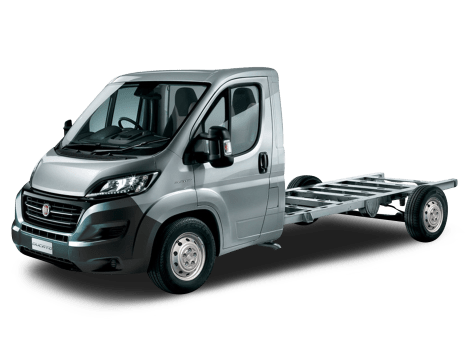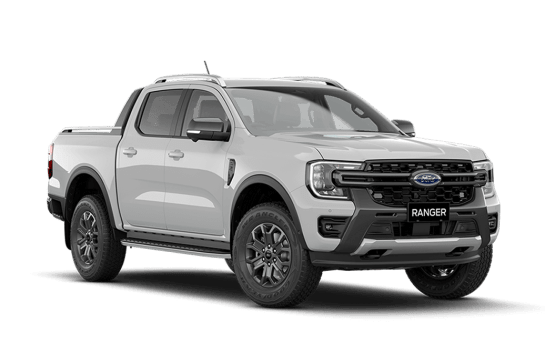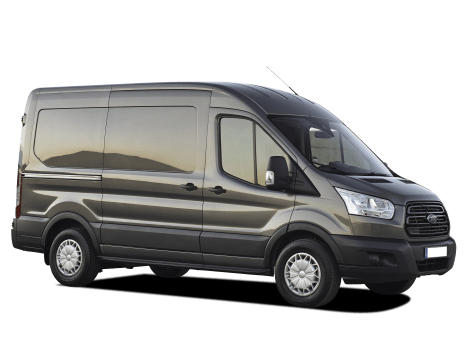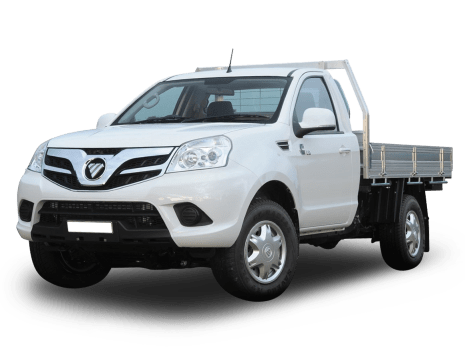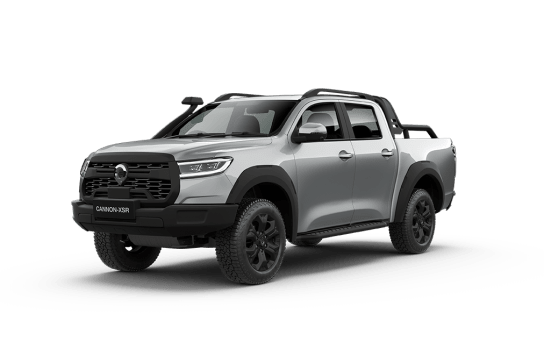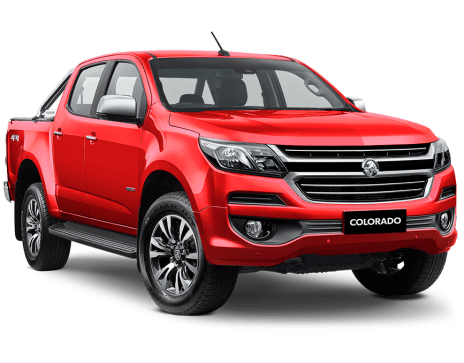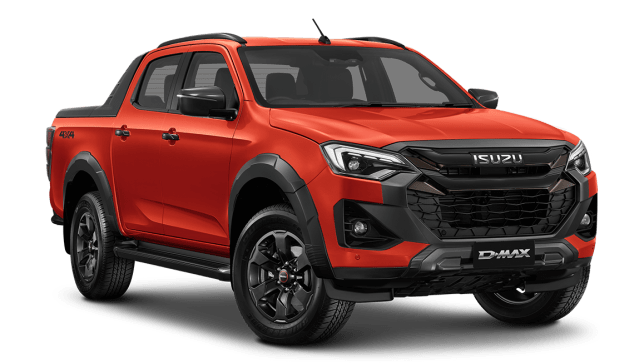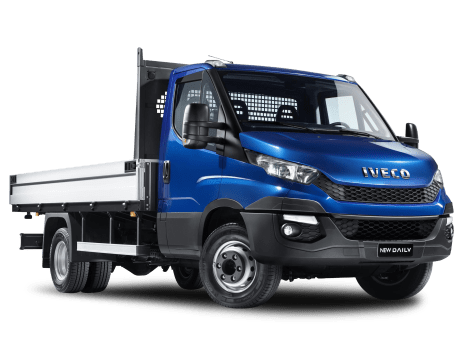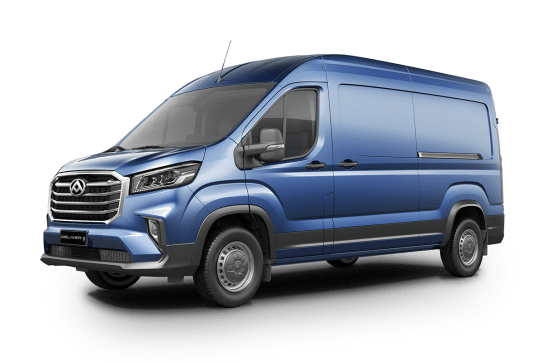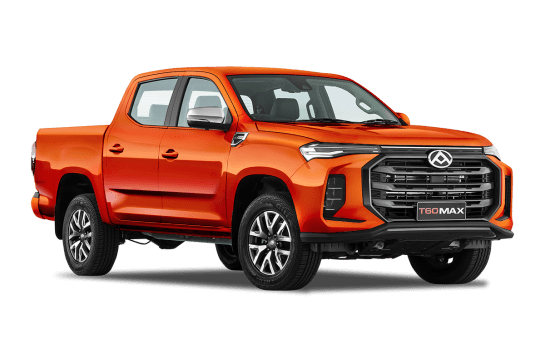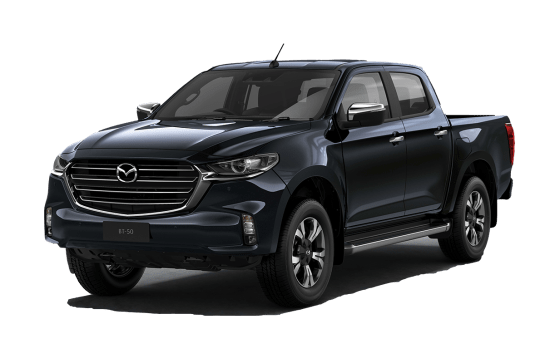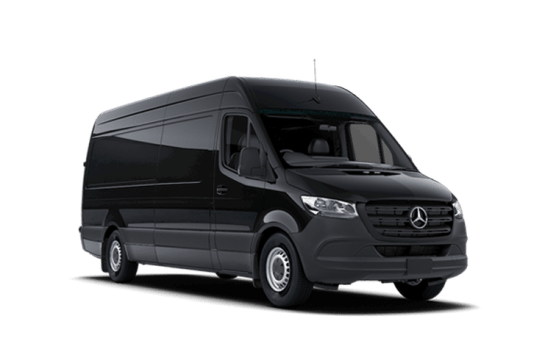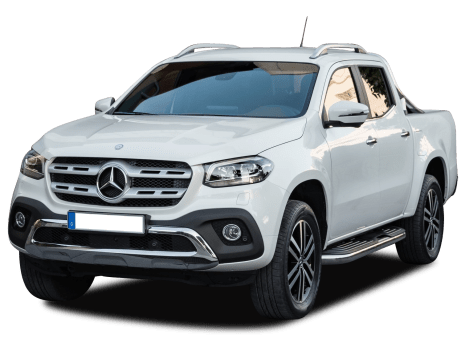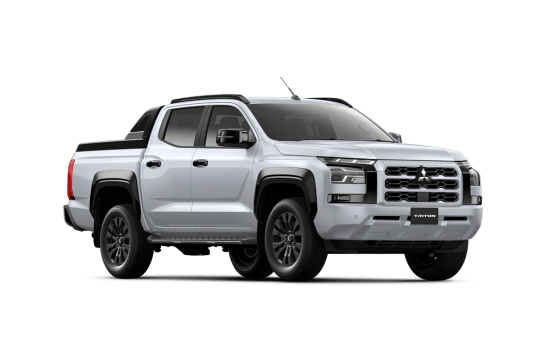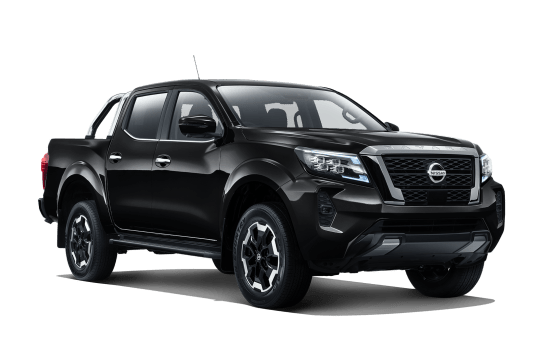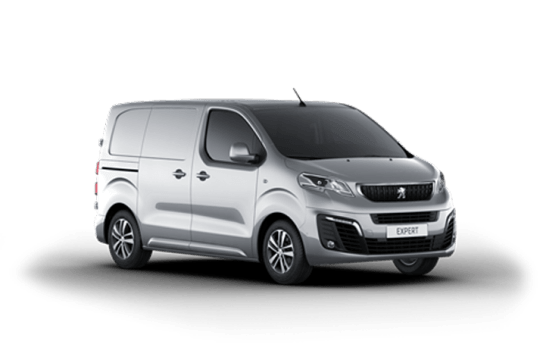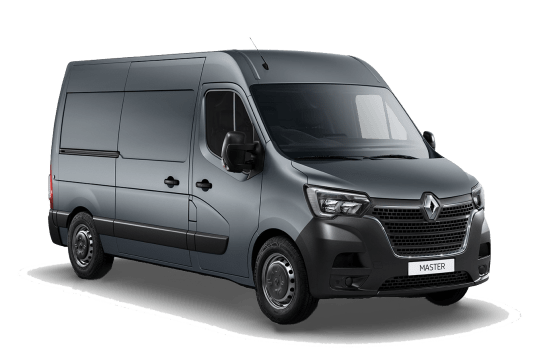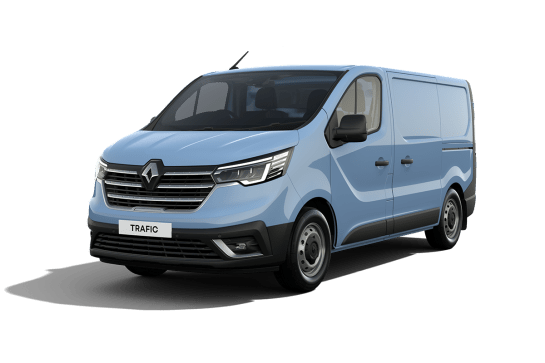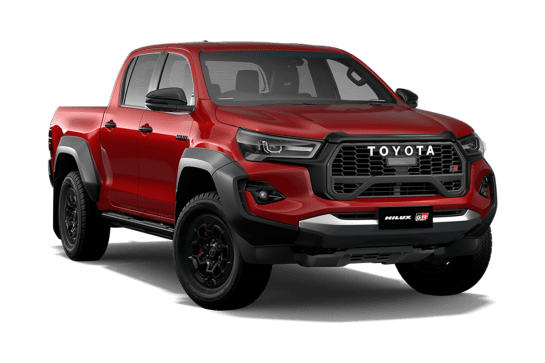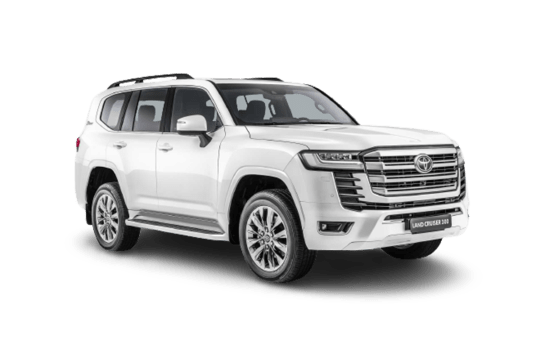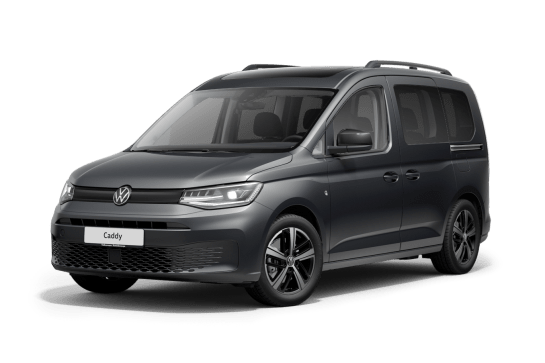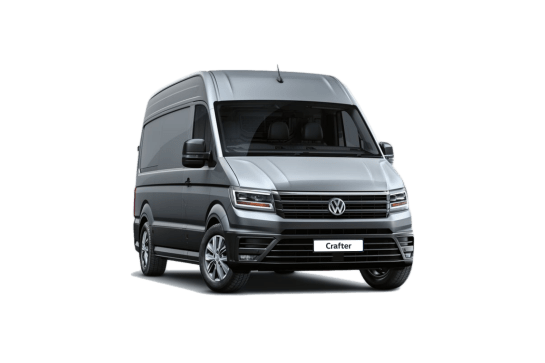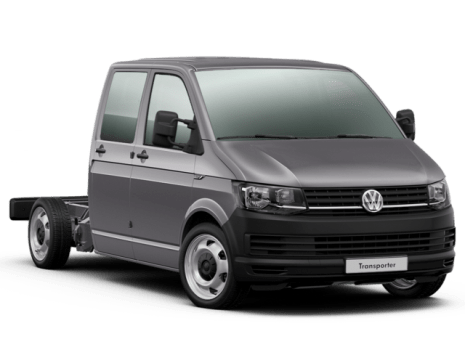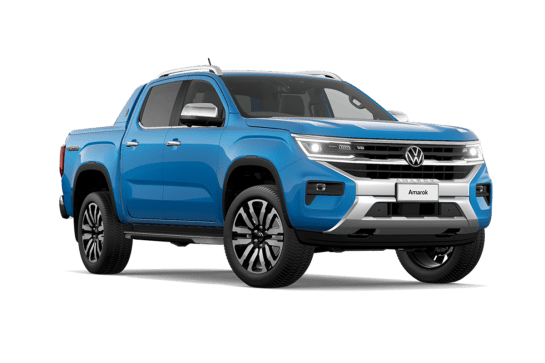
Volkswagen Amarok VS GWM UTE
Volkswagen Amarok
Likes
- Off-road ability
- Value
- Safety
Dislikes
- No adjustable rear ventilation
- No back seat USBs
- Firm suspension
GWM UTE
Likes
- Well equipped
- Front and rear diff locks
- Well priced for something with so much gear
Dislikes
- Not as refined as it should be
- Jittery ride on irregular surfaces
- Overly busy transmission
Summary
Volkswagen Amarok
I couldn’t say I’m familiar with Australia’s inland deserts. I thought there were two or three - the Simpson, Gibson, maybe the Great Sandy.
But did you know there are 10? And Volkswagen knows each intimately thanks to a recent Guinness world record verified crossing of them all… in one go.
It took a tweaked-up Amarok six days and 17 hours if you must know, and to celebrate VW has created a limited build (300 unit) version of the dual cab ute called, you guessed it… the 10 Deserts Edition.
Read more about
- Record-breaking Aussie desert assault inspires locally-developed special 2025 Volkswagen Amarok to challenge Ford Ranger, Ineos Grenadier Quartermaster, Isuzu D-Max Blade, LDV T60 Max Plus, Mitsubishi Triton, Nissan Navara Warrior, Toyota HiLux GR Sport
- Volkswagen Touareg 2024 review
- Seven-seat 2025 Volkswagen Tayron SUV revealed ahead of Paris motor show debut: Tiguan Allspace replacement poised to compete with Hyundai Santa Fe, Toyota Kluger and Kia Sorento
And we were invited to steer it on-road and over a variety of challenging (public) off-road trails around Mt Macedon and Cobaw, about an hour’s drive north-west of Melbourne.
Not quite the Strzelecki Track, but tough enough to see if this special VeeDub has what it takes to drive your off-highway ambitions. So, stay with us!
| Safety rating | — |
|---|---|
| Engine Type | — |
| Fuel Type | — |
| Fuel Efficiency | —L/100km |
| Seating | — |
GWM UTE
The Cannon XSR is GWM’s new top-shelf ute variant.
This dual-cab 4WD ute is intended as an off-road-focussed vehicle and has visual and mechanical upgrades over the rest of the Cannon stable, including part-time 4WD (not the full-time 4WD on GWM’s lower-spec Cannons), a front differential lock (in addition to the existing rear diff lock), raised air intake (aka a snorkel) and Cooper Discoverer AT3 all-terrain tyres.
It’s priced from $52,990 drive-away, so costs about $7500 more than you’d pay for the standard Cannon X on which this special edition ute is based. But it still undercuts similarly-equipped top-spec Ford Ranger and Toyota HiLux utes by about $20,000.
Read more about
So, with twin lockers, a snorkel, underbody protection and all-terrain tyres, is the GWM XSR worth the extra cash?
Read on.
| Safety rating | |
|---|---|
| Engine Type | 2.0L turbo |
| Fuel Type | Diesel |
| Fuel Efficiency | 9.4L/100km |
| Seating | 5 seats |
Verdict
Volkswagen Amarok8/10
It’s been developed with adventurous four-wheel-drive enthusiasts in mind, but we don’t know exactly what it will cost. However, given the current ballpark estimate, the value equation will likely stack up well and things like safety and the ownership package are solid. And we know it’s tough and capable in rough going, which is the main point, after all. This package works brilliantly well.
Note: CarsGuide attended this event as a guest of the manufacturer, with travel, accommodation and meals provided.
GWM UTE7/10
In a very competitive ute market, the GWM Cannon XSR represents plenty of bang for your buck, but it’s just not as refined as you’d hope.
It should be better at this price-point, especially when it’ll be unfavourably cross-shopped with lower-spec variants in the Ford Ranger, Isuzu D-Max and Toyota HiLux line-ups.
It’s a nice enough vehicle on-road, and the XSR is an effective 4WD on the dirt without ever being truly exceptional – but that’s fine for those who want to save big bucks and still drive away in a well-equipped twin-locked off-road vehicle.
Design
Volkswagen Amarok
The Amarok is already a sleek-looking dual cab and the ‘Clear White’-only 10 Deserts Edition picks up unique black badging, a standard black tonneau cover and 17-inch satin ‘Asphalt Black’ alloy wheels shod with all-terrain rubber. More hardcore off-road tyres are a no-cost option, which is a nice touch, and there are black side steps and a ‘Asphalt Black’ mesh grille with ‘Bolder Grey’ inserts.
An ARB lift kit raises ground clearance by 40mm, from an already decent 235mm to 275mm, and ‘Genuine VW’ underbody protection is added.
The interior is cool, calm and collected in typical VW fashion with a predominantly dark grey colour palette highlighted by silver and brushed metal accents.
The 8.0-inch digital instrument display and 10.1-inch multimedia screen look contemporary without being garish, and there’s a workable mix of digital and physical controls, with climate being the former and audio the latter.
GWM UTE
The XSR is 5439mm long (with a 3230mm wheelbase), 1958mm wide, and 1918mm high. It has a listed kerb weight of 1965kg.
It looks like the mongrel child of a HiLux, Ranger and D-Max – in a good way.
The wider-than-standard wheel track, as well as the snorkel, sports bar, substantial bash plates, tyres and even red brake calipers add to this ute’s presence.
Practicality
Volkswagen Amarok
At just over 5.3m long, a little more than 1.9m wide and close to 1.9m tall (with a 3270mm wheelbase) the Amarok lives within the same dimensional footprint as key competitors like the Ford Ranger, Toyota HiLux and Isuzu D-Max.
Up front, it's easy to get in and out thanks to big door apertures and this limited edition’s slightly higher ride height. There’s plenty of breathing space and good separation from your co-pilot.
In terms of storage there are door bins with room for decent size bottles, a couple of cup/bottle holders in the centre console, a lidded storage box between the seats (which doubles as a centre armrest), a wireless charging pad ahead of that, two glove boxes, a shallow well in the centre of the dashtop and a drop down sunglasses holder.
In the back, sitting behind the driver’s seat set to my 183cm position, there’s plenty of head, leg and toe room.
Three full-size adults across the second row will be okay for short to medium trips and a trio of up to late teenage kids will be fine. There are bins in the doors with room for medium-size bottles, a fold-down centre armrest with a pair of cupholders and map pockets in the front seat backs.
On the not so good side, there’s no individual ventilation control for back-seaters and the only power option is a 12-volt socket with USB-A and -C ports confined to the front only. Shout out for the USB input in the mirror housing for a dash cam, though.
The roughly 1.5m long by 1.2m wide illuminated tray will accommodate a Euro pallet between the wheel arches. There are multiple tie-down rings and tailgate closing is assisted.
Maximum towing capacity for a braked trailer is 3500kg (750kg unbraked), a full-size spare is on-board and there are two towing hooks at the front.
GWM UTE
The XSR’s five-seat interior is a neat and roomy space but, in line with most utes at this price-point, if you scrutinise it in a critical way you soon discover that some parts feel a bit cheap and flimsy, such as some buttons, dials and switches.
Up front there are two USB ports, a wireless charging pad, a 12V plug and a capacious centre console.
A pair of cupholders can be concealed under a sliding cover and the storage bin is on the right side of big.
The driver gets a six-way power-adjustable seat; the front-seat passenger gets four-way power adjustment. Both seats are comfortable without being too plush.
Second-row passengers get a firm but comfortable seat and amenities include a USB port, a 220V plug, and a fold-down centre armrest.
The second-row seat base can be folded up and out of the way to make room for more gear if only two people are travelling.
Build quality is generally okay, part from the aforementioned flimsy-feeling buttons.
The XSR’s business end, the tub, has a durable-looking tub liner, tie-down points and a handy pop-out step hidden in the top of the tailgate.
But it's worth noting this ute’s tailgate can’t be locked.
Price and features
Volkswagen Amarok
Although it’s being cagey on exact pricing at this stage, Volkswagen says the Amarok 10 Deserts Edition will be positioned between $65 and $70K (likely closer to former than the latter).
The Amarok Life TDI500 this car is based on boasts a healthy standard equipment list including LED headlights, daytime running lights and fog lights, adaptive cruise control (with stop/go), alloy rims, a towbar, wireless charging and tailgate lift assist plus wireless Android Auto and Apple CarPlay.
There’s also six-speaker audio (with digital radio), single-zone air-con, electrically folding and heated exterior mirrors (with courtesy lamps), auto headlight and high-beam control, a leather-trimmed steering wheel and gearshift, and auto rain-sensing wipers.
Not a bad fit-out, even before adding the extra 10 Deserts kit (see Design) and that prospective price puts it between the existing Amarok TDI500 Life ($59,490) and Style $69,740), both before on-road costs, and a step up from Ford’s close to $57K limited-run (1500 unit) Ranger Black Edition.
GWM UTE
The XSR has a manufacturer suggested retail price of $52,990 drive-away.
Standard features include a 9.0-inch multimedia touchscreen system (with Apple CarPlay and Android Auto), a 7.0-inch digital driver info display, quilted leather seat trim, quilted leather door trim, 18-inch black alloy wheels, a sports bar, an assisted tailgate (with a pop-out step) and roof rails.
It also has LED headlights with LED DRLs, side steps, powered mirrors, keyless entry, push-button start, power-adjustable and heated front seats, a leather steering wheel, single-zone climate control air conditioning, an auto-dimming rear view mirror, tinted rear glass, and a six-speaker audio system.
As well, the XSR gets a part-time 4WD system (with 2WD high-range, 4WD high-range and 4WD low-range), rather than full-time 4WD, which is on lower-spec GWM utes; a front differential lock (in addition to the existing rear diff lock) and Cooper Discoverer AT3 all-terrain tyres.
It also gets red brake calipers, an underbody bash plate, wheel arch flares, and a sunroof.
Elsewhere, it gets steel front and rear bumpers and a new black grille.
Under the bonnet
Volkswagen Amarok
The record-breaking Amarok was a V6 Style, but this limited edition is based on the Amarok TDI500 Life, so a 2.0-litre turbo-diesel four-cylinder engine sits under the bonnet, sending 154kW/500Nm to the rear, or all four wheels, via a 10-speed automatic transmission.
This twin-turbo, dual-overhead cam unit is shared with the Amarok’s twin under the skin, the Ford Ranger (where it’s referred to as the ‘Bi-Turbo’), and the selectable all-wheel-drive system features three driving modes - 2H, 4H & 4L - and there’s a mechanical rear diff lock.
GWM UTE
The XSR has the Cannon’s 2.0-litre four-cylinder turbo-diesel engine that produces 120kW at 3600rpm and 400Nm from 1500rpm to 2500rpm.
It has an eight-speed automatic transmission.
As mentioned, the XSR has part-time 4WD – with 2WD high-range, 4WD high-range and 4WD low-range – rather than the full-time 4WD set-up that’s in standard Cannons.
Efficiency
Volkswagen Amarok
The TDI500’s official fuel consumption figure on the combined (urban/extra-urban) cycle is 7.2L/100km. With an 80-litre fuel tank on board, theoretical range is around 1100km.
Stop-start is standard, but we’ll have to wait for an as-tested figure, as this launch drive leant heavily into arduous off-road work.
For reference, in previous testing we’ve recorded real-world consumption closer to 10.0L/100km for this Amarok powertrain, which would deliver a driving range of around 800km.
GWM UTE
The Cannon XSR has a listed fuel consumption of 9.4L/100km on a combined cycle.
Actual fuel consumption on this test, from pump to pump, was 11.2L/100km but, as is the nature of my testing, I did a lot of low-range four-wheel driving.
The Cannon XSR has an 78-litre tank so, going by that fuel figure above, you could reasonably expect a driving range of about 696km from a full tank.
Note: Drop 30km to 50km from any vehicle’s total calculated fuel-range figure for a better idea of that vehicle’s safe touring range – so, following that advice, the above driving range figure (696km) would become 666km after a 30km safe-distance buffer has been subtracted.
Also, remember that numerous other factors affect your fuel consumption and so impact your driving range, including how much extra weight you have onboard (passengers, camping gear, etc), whether your vehicle is fitted with any aftermarket equipment (bullbar, spare-wheel carrier, etc), whether you are towing (a camper-trailer, caravan, or boat, etc), your vehicle's tyre pressures, and the conditions.
Driving
Volkswagen Amarok
The Amarok TDI500 is easy and effortless to drive on the open road. Peak power of 154kW (at 3750rpm) is adequate, but it’s the 500Nm of pulling power, delivered exactly where you want it at just 1750rpm, that sets the tone.
With 10 ratios to cycle through, the auto transmission also helps keep things in the sweet spot and while you’re aware of a certain amount of diesel thrum under acceleration, in this type of ute that’s more reassuring than annoying.
Suspension is by double wishbones and coil springs at the front with leaf springs supporting a live axle at the rear. And as is typical for a ute with this set-up (particularly unladen) bumps on a typical B-road make their presence felt, but not to an alarming degree.
We drove it on loose dirt roads and some challenging trails (which we’ll get to shortly), but overall it feels capable and pretty well planted on the road.
The steering is electrically assisted and there’s a good connection between your hands on the wheel and the tyres on the road.
Standard 17-inch alloys are shod with 225x70 Continental CrossContact ATR (all-terrain) tyres and they’re civilised on the highway. Also worth noting more aggressive off-road-focused rubber is a no-cost option, which is a nice touch.
The brakes are discs front and rear, which is notable because the entry-level Amarok Core is fitted with drums at the back.
On the open-road and in slow-going off-highway, where you’re constantly feathering the brakes during steep declines, braking remains strong with a progressive pedal feel.
The off-road section of the launch drive was more about the nature of the terrain than ultra-steep inclines or declines.
Big boulders, cavernous ruts, bulging tree roots as well as loose gravel and sand surfaces were the flavours of the day and the Amarok did a great job.
Standard approach, departure and ramp-over angles for the Life TDI500 are pretty solid, but an extra 40mm of ground clearance makes a big difference.
Worth noting the 10 Deserts Edition held its own with the more heavily modified V6 Style that set the Guinness record, which we also had a chance to steer.
With around 80kg less weight on the front axle, the four-cylinder feels agile and eager in the rough stuff and we saw some impressive axle articulation as the suspension and drive systems helped the Amarok pick its way through the most difficult sections.
We stepped our way through two-wheel high, four-wheel high and 4WD low modes, pulling in the diff lock only when things got hairy.
In terms of miscellaneous observations, it’s worth noting the turning circle is 12.8m. The Amarok is a sizeable vehicle and you’d expect the turning circle to be up there, but just be prepared for a reasonably wide arc when you’re parking or making three-point turns.
And the front seats are a stand-out. They’re pretty much sports editions - grippy and comfortable even after a full day behind the wheel on- and off-road. And their lateral support keeps you nicely located in the corners.
GWM UTE
If you’re not expecting a dynamic, sporty driving experience from the Cannon XSR, then you won’t be disappointed.
I’m enjoying the fact that off-road vehicles from China and India are improving all the time but there are significant trade-offs when opting for a much cheaper version of the ute you actually want.
The XSR is not an insubstantial ute, but that doesn’t excuse its less-than-ideal steering (which feels too loose) or its stiff ride on upgraded suspension which, even though it increases wheel travel (for 4WDing – more about that later), seemingly hasn’t been tuned to suit the XSR’s bigger tyres, wider wheel track and greater bulk than its lower-spec stablemates.
Also, this ute has an unwieldy turning circle of 13.7m, which makes it an interesting vehicle to manoeuvre along busy urban streets or through a bustling car park.
This is a well priced ute if compared to similarly equipped, much more expensive utes, but that doesn’t excuse its touchy throttle and thrashy transmission.
However, its engine, which can feel underdone when challenged, has a relaxed feel about it when open-road cruising and if you aren’t putting too much pressure on it you likely won’t think it’s much of a let-down.
Overall, the XSR does okay on sealed surfaces, without ever getting anywhere near great – it’s simply not as refined or compliant as it could – or should – be.
On the dirt track leading to our 4WD test track, the XSR was very skippy over corrugations and tended to thump through potholes.
This ute does go well off-road though when it comes time for low-range 4WDing but, equipped with front and rear diff locks, that’s to be expected.
Off-road traction control and other systems including hill descent control, are adequate without being as seamlessly smooth as the equivalent systems in more expensive vehicles.
It also has 'Crawl Mode' (allows for no-pedal, low-speed driving) and 'Turn Assist' (which brakes the XSR’s inside rear wheel to reduce the ute’s turning circle on traction-compromised surfaces).
The over-sensitive throttle is far from ideal during low-speed low-range 4WDing when you need absolute control for safe driving, but I did become used to it – or at least I put up with it.
As mentioned earlier, the upgraded suspension has boosted wheel travel, which means you’re more than likely able in the XSR to stretch a tyre to the dirt for better traction and controlled forward progress.
The XSR’s Cooper Discoverer AT3 all-terrain tyres help, especially when the dirt becomes sticky mud that would gum up a lesser tyre, and we had no strife getting up and over one of our more severe set-piece hill climbs on that rubber.
All in all, the XSR is a capable twin-locked 4WD without ever being exceptional – and that’s fine.
The Cannon XSR has towing capacities of 750kg (unbraked) and 3000kg (braked).
Safety
Volkswagen Amarok
The Amarok was given a maximum five-star ANCAP assessment in 2022 and active (crash-avoidance) tech includes AEB (with pedestrian and cyclist monitoring), lane keeping assist and lane departure warning, adaptive cruise control (with stop and go function), rear cross-traffic alert, blind-spot monitoring, hill-descent control, tyre-pressure monitoring, driver fatigue alert, roll-over mitigation and trailer sway control.
There’s also ‘Swerve Steer Assist’, road and speed sign recognition, front and rear parking distance controls, and a reversing camera. That’s an impressive suite for the category.
If a crash is unavoidable, there are nine airbags onboard - dual front and front side, dual front knee, full-length side curtain and a front-centre bag to help reduce the chance of head clash injuries in a side-on crash. Again, above average.
The Amarok scores well with ANCAP for vulnerable road user protection, multi-collision braking minimises the chances of secondary collisions following an initial impact and there’s an auto emergency call-out function able to sense if the driver is incapacitated following an airbag deployment.
Important to note there are top tethers and ISOFIX anchors for baby capsules and/or child seats on the outer rear seat positions only.
GWM UTE
The Cannon range has the maximum five-star ANCAP rating from testing in 2021, however the Cannon XSR is not covered by this rating.
Standard safety gear on the XSR includes seven airbags, AEB (sans pedestrian detection) forward collision warning, lane-departure warning, lane-keep assistance, adaptive cruise control, traffic sign recognition, rear parking sensors, a 360-degree camera and tyre-pressure monitoring.
It does not get front parking sensors, lane-change assist or a door-open warning.
Ownership
Volkswagen Amarok
Volkswagen covers the Amarok with a five-year/unlimited-km warranty, which is expected in the mainstream market.
Service is recommended every 12 months/15,000km, which is pretty handy, and the price averages $360 for the first five years, which is competitive for the class and price point.
Fixed price three- or five-year plans are also offered, which brings a modest discount and locks in the pricing. Twelve months of roadside assistance is complementary, renewed for another year each time you service the car at an authorised VW dealer.
GWM UTE
The XSR is covered by a seven year/unlimited km warranty.
The first service is scheduled at the six-month/5000km mark (and costs $260), then every 12 months or 10,000km, with each service costing $360 a pop.



